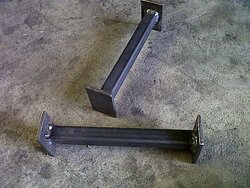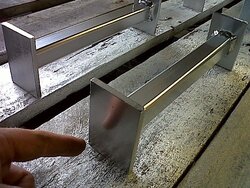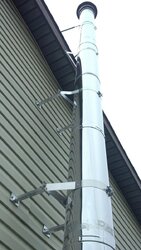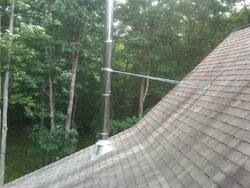Hello all. I'm getting ready to order my Class A chimney parts and just wanted to run it by everyone before I make the purchase. I believe I have everything from the stove to and including the support box, so I will just need from the support box to the cap. I will be using Selkirk.
First question: I noticed Selkirk has a couple different lines of chimney pipe. Which do I want to use?
Second question: Can I use a roof brace mounted to the exterior wall to support the pipe? My chimney will be approximately 1'-9" to the center of the pipe from the wall. It looks like the normal wall brackets don't extend that far.
Final question: The pipe sizes are inside dimension..correct? Cut me some slack...I'm new to this
Here's what I plan to order:
6" x 48" - 3 sections
6" x 18" -1 section (12" may be cutting it too close)
1 Chimney cap
1 Storm collar
1 Roof brace
1 - 2/12 -6/12 adjustable roof flashing
Here's a pic of what I'm working with: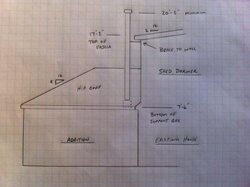
First question: I noticed Selkirk has a couple different lines of chimney pipe. Which do I want to use?
Second question: Can I use a roof brace mounted to the exterior wall to support the pipe? My chimney will be approximately 1'-9" to the center of the pipe from the wall. It looks like the normal wall brackets don't extend that far.
Final question: The pipe sizes are inside dimension..correct? Cut me some slack...I'm new to this

Here's what I plan to order:
6" x 48" - 3 sections
6" x 18" -1 section (12" may be cutting it too close)
1 Chimney cap
1 Storm collar
1 Roof brace
1 - 2/12 -6/12 adjustable roof flashing
Here's a pic of what I'm working with:



